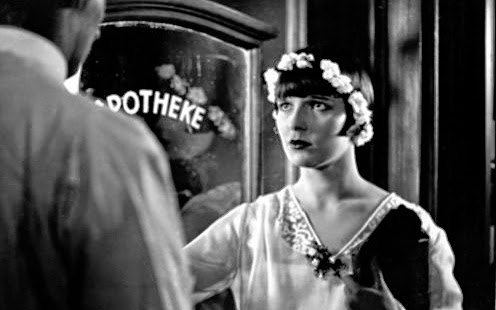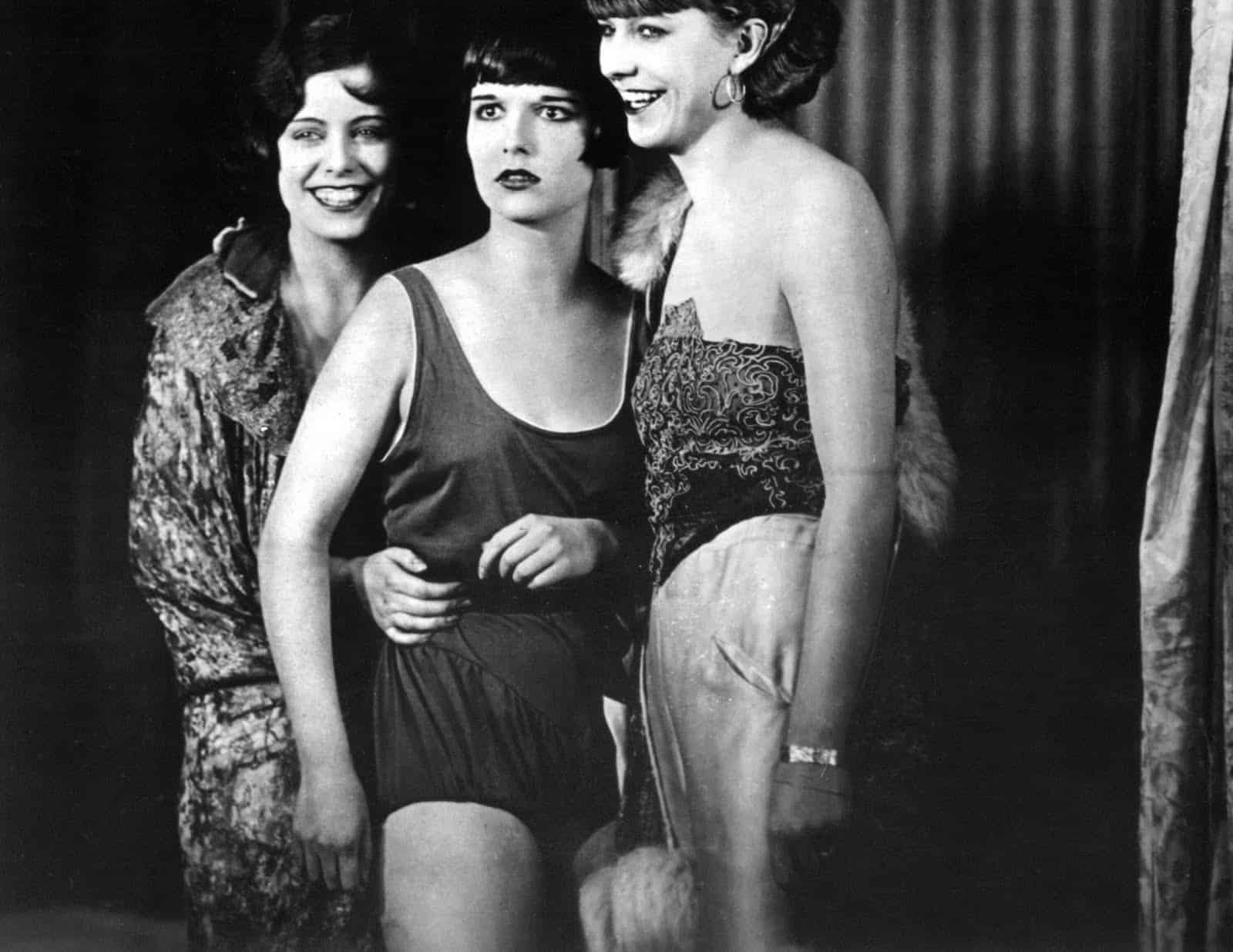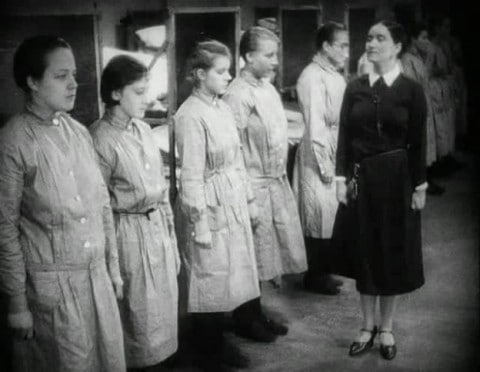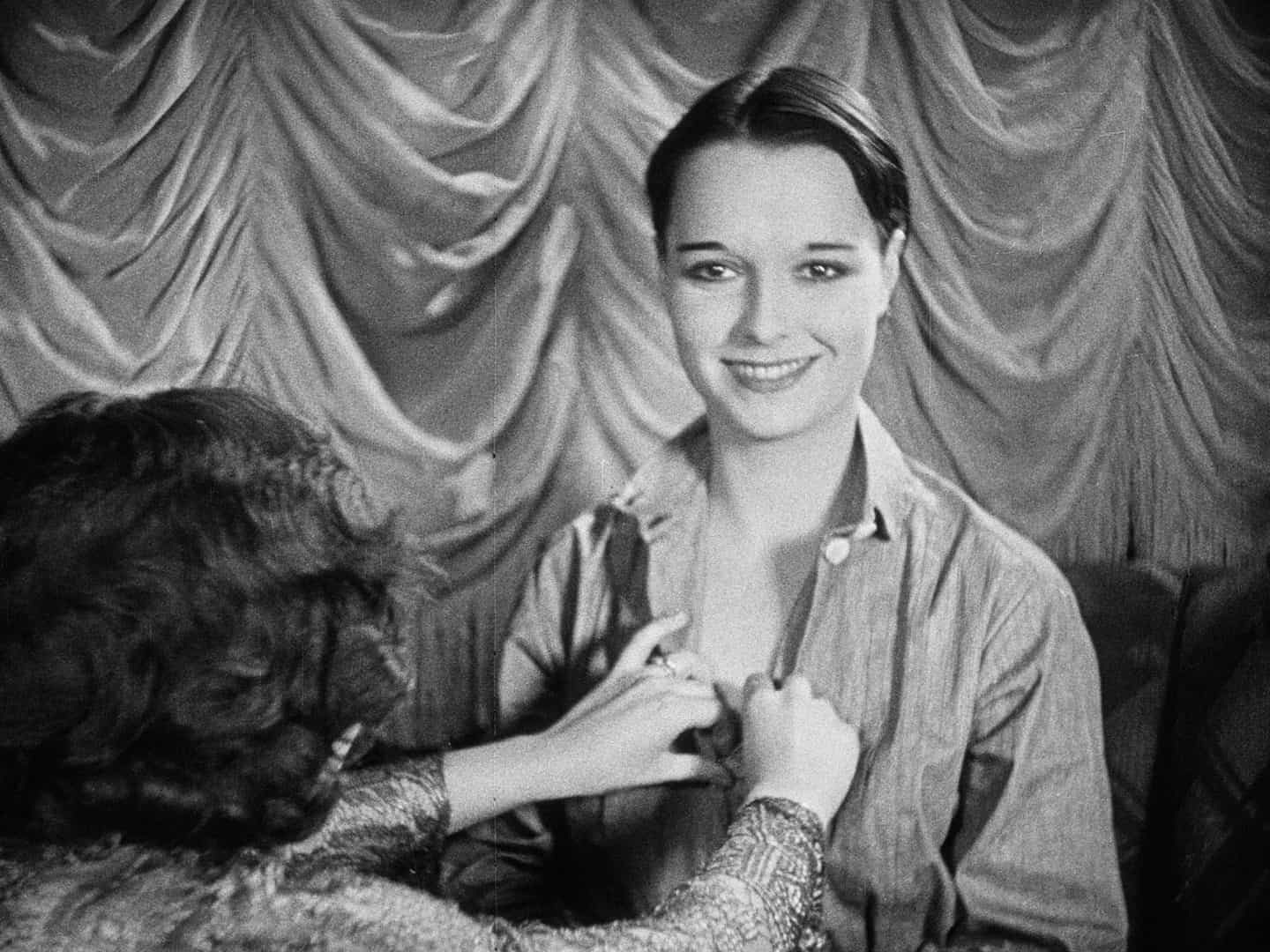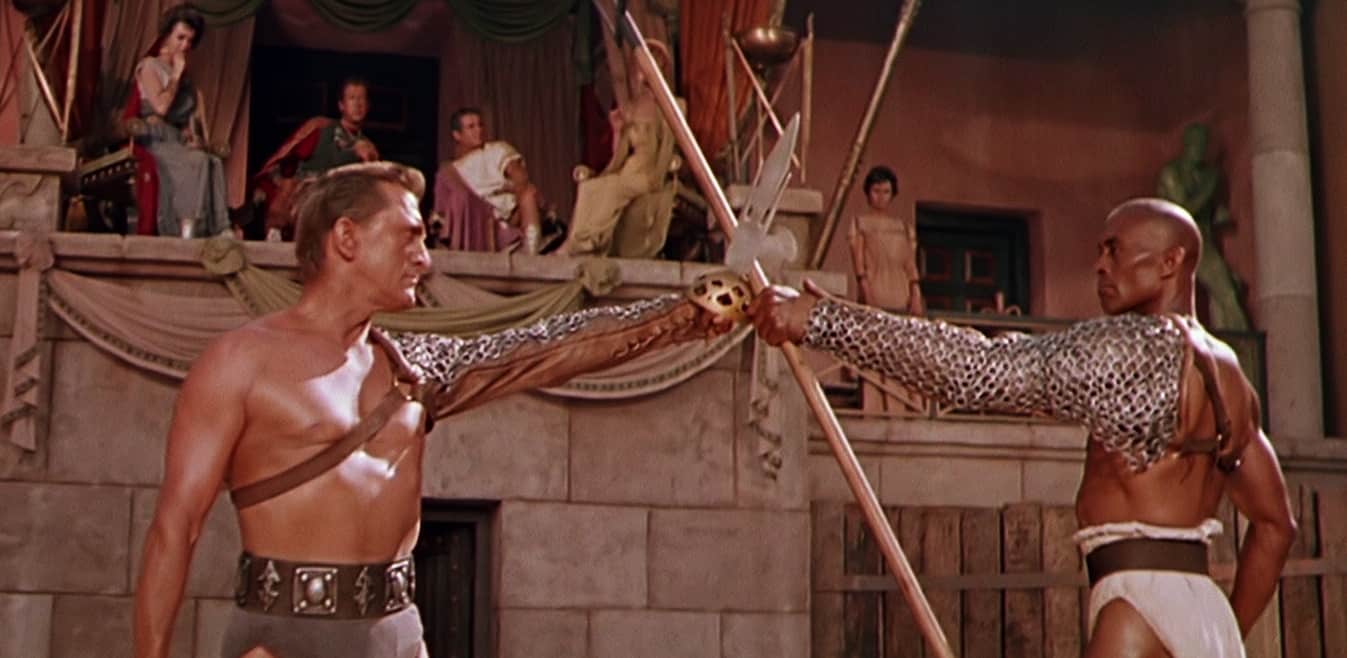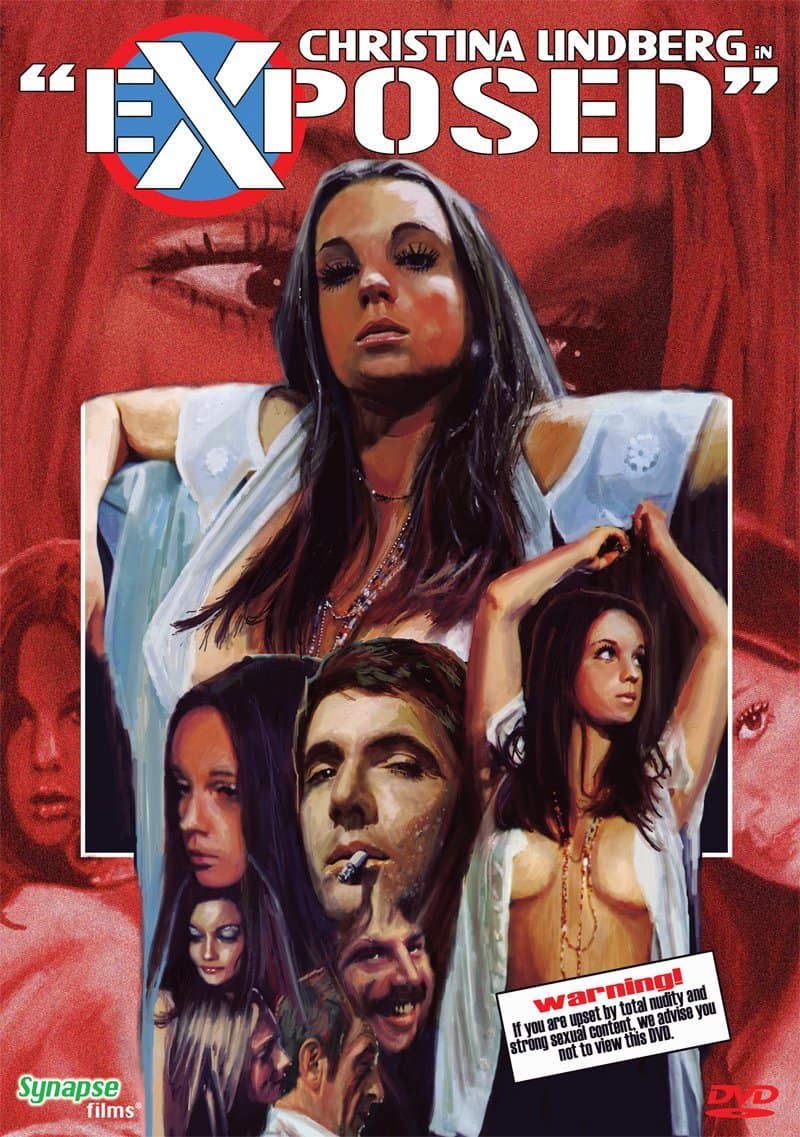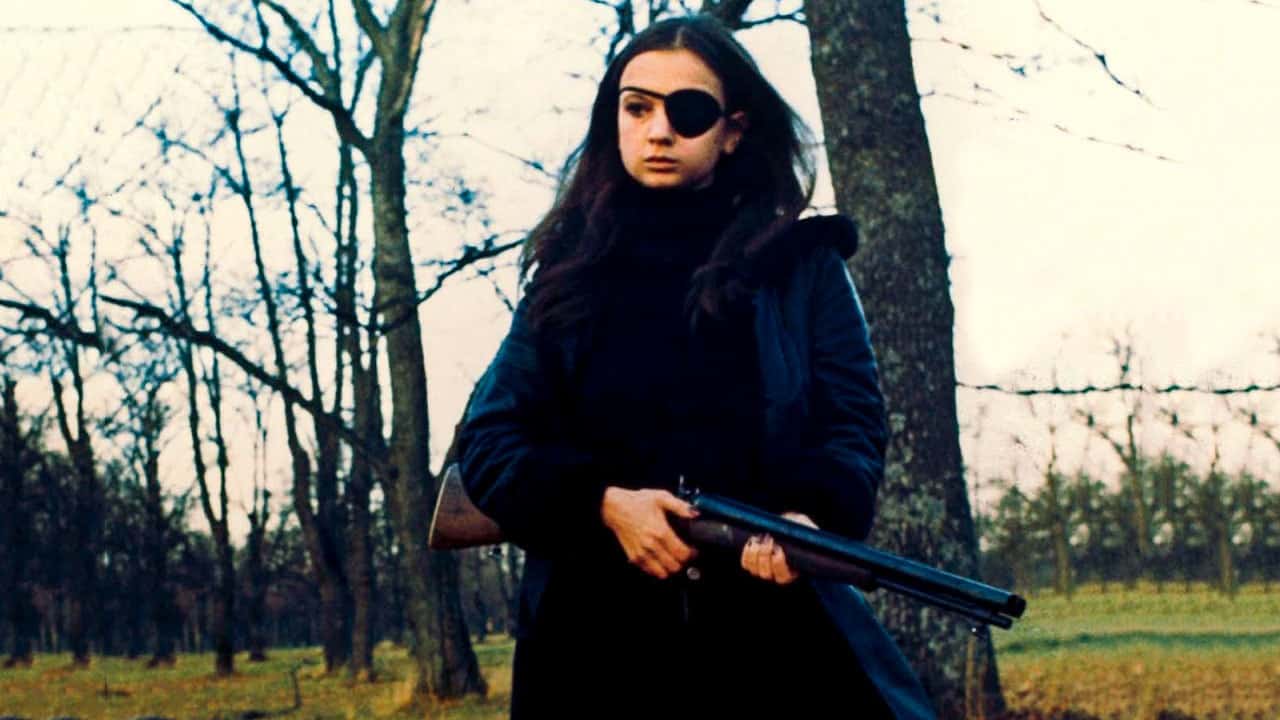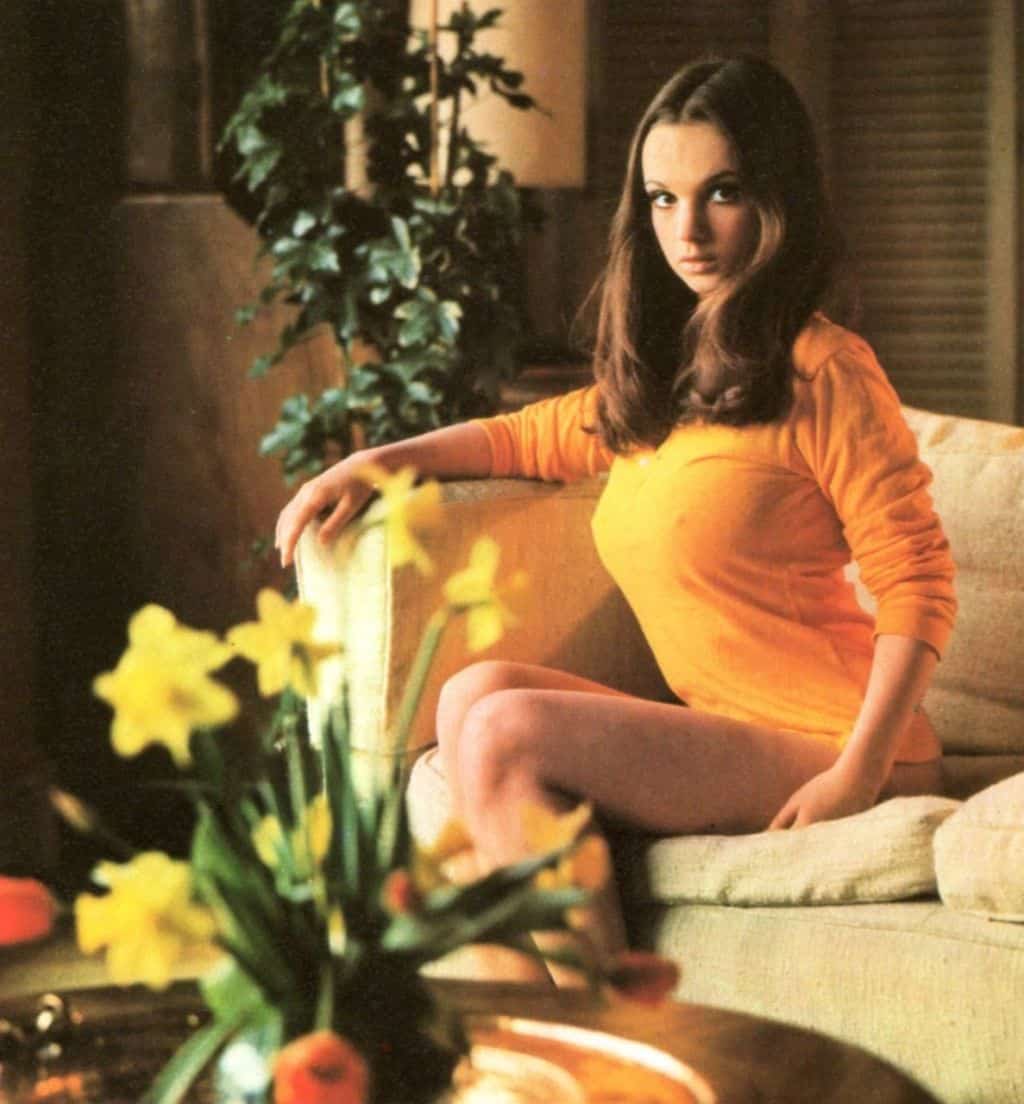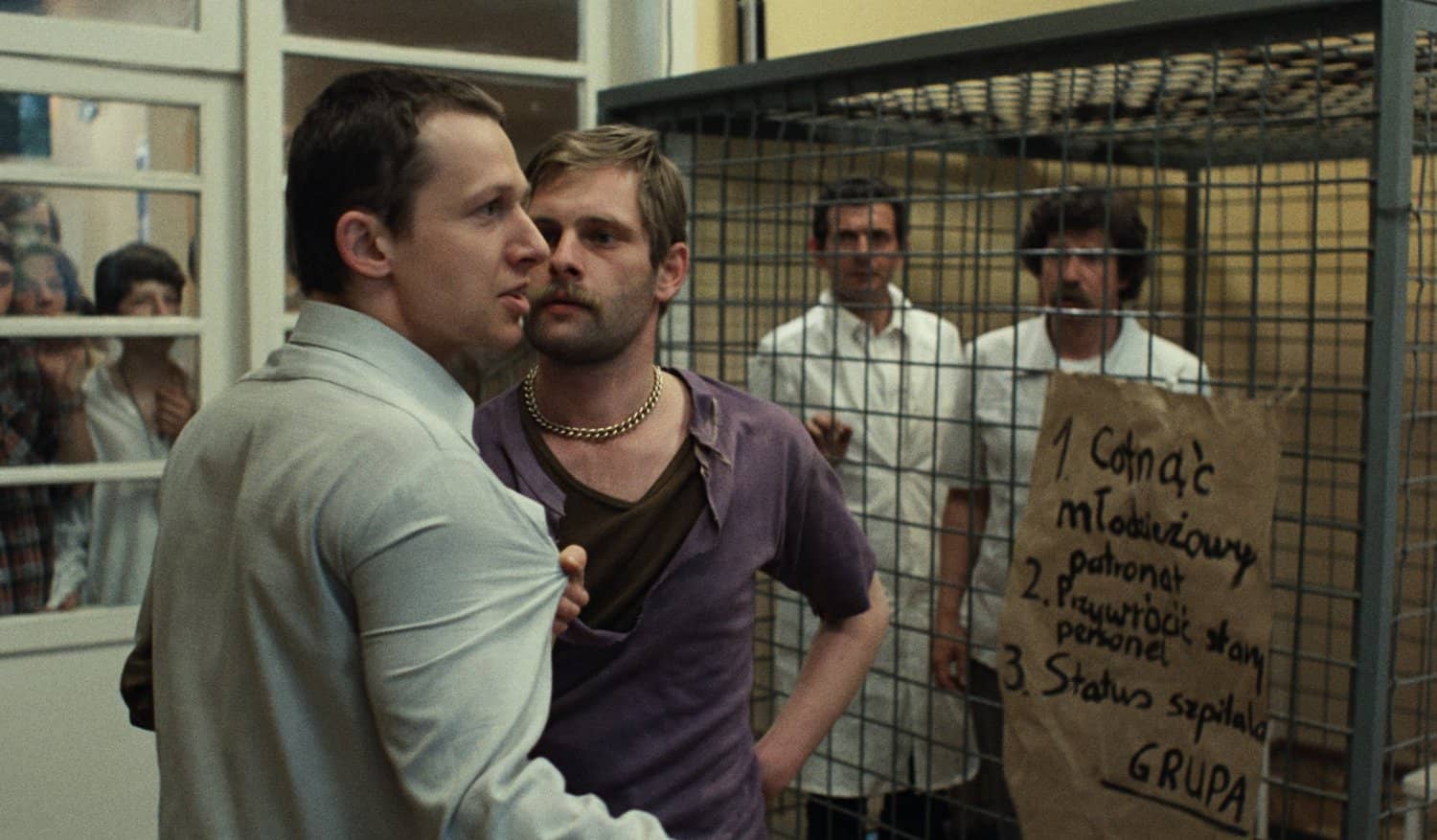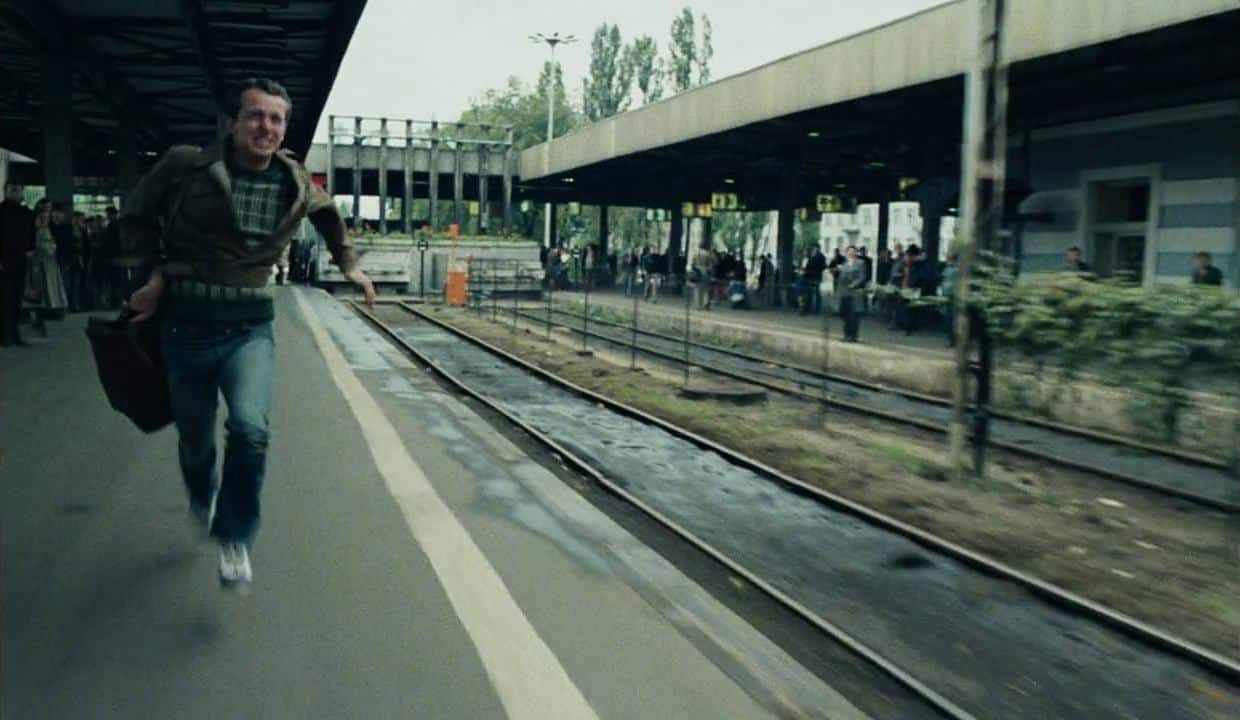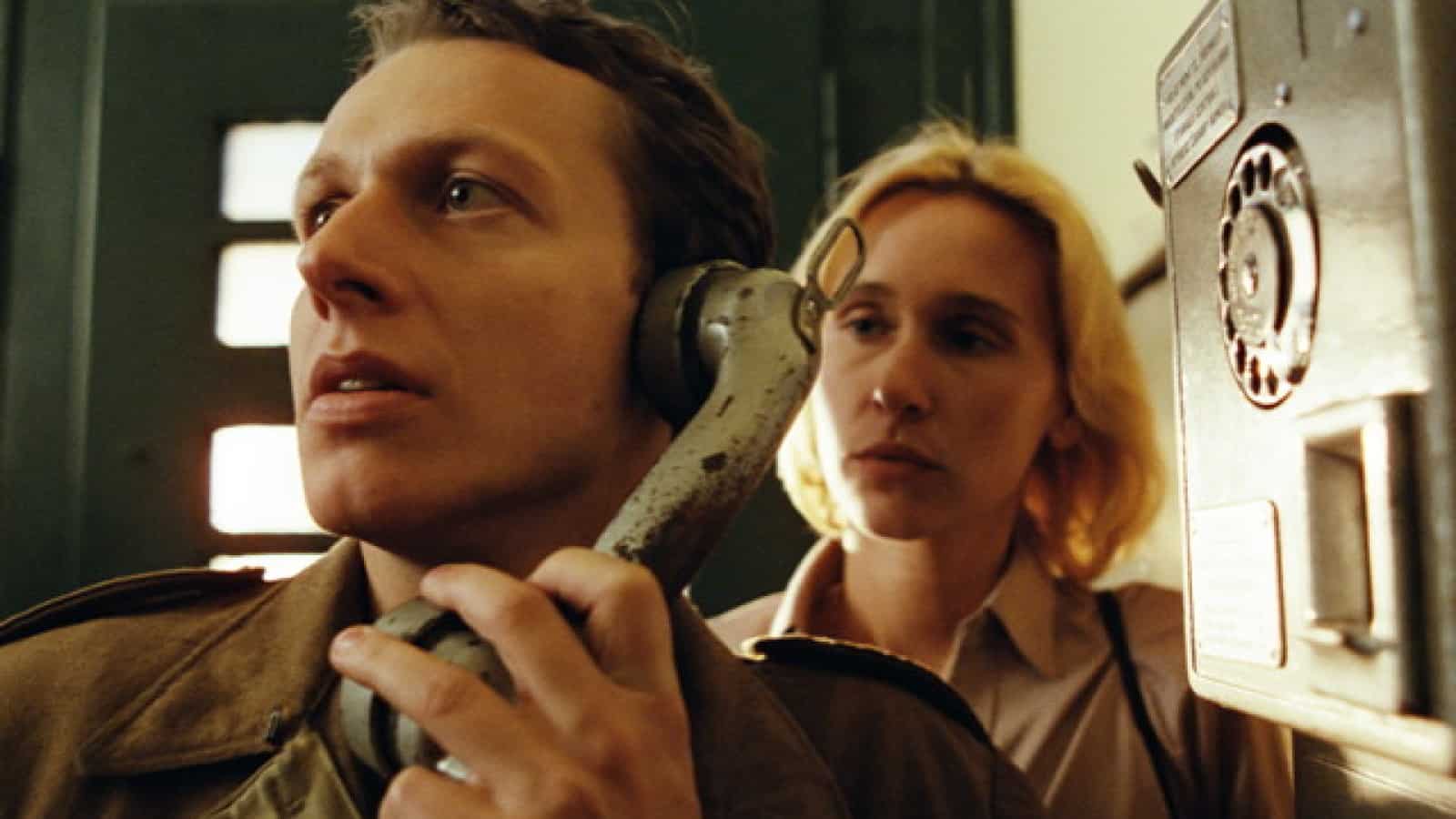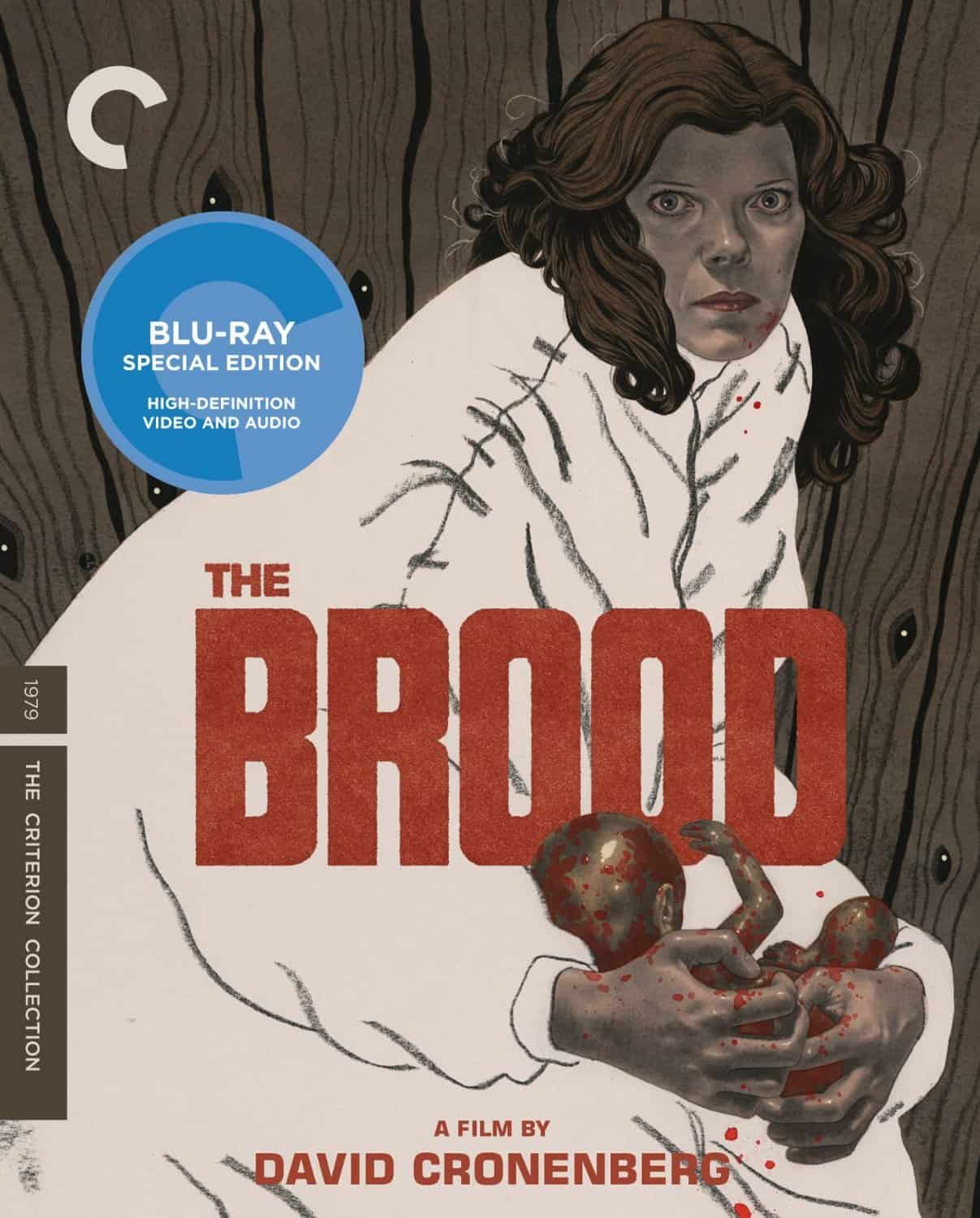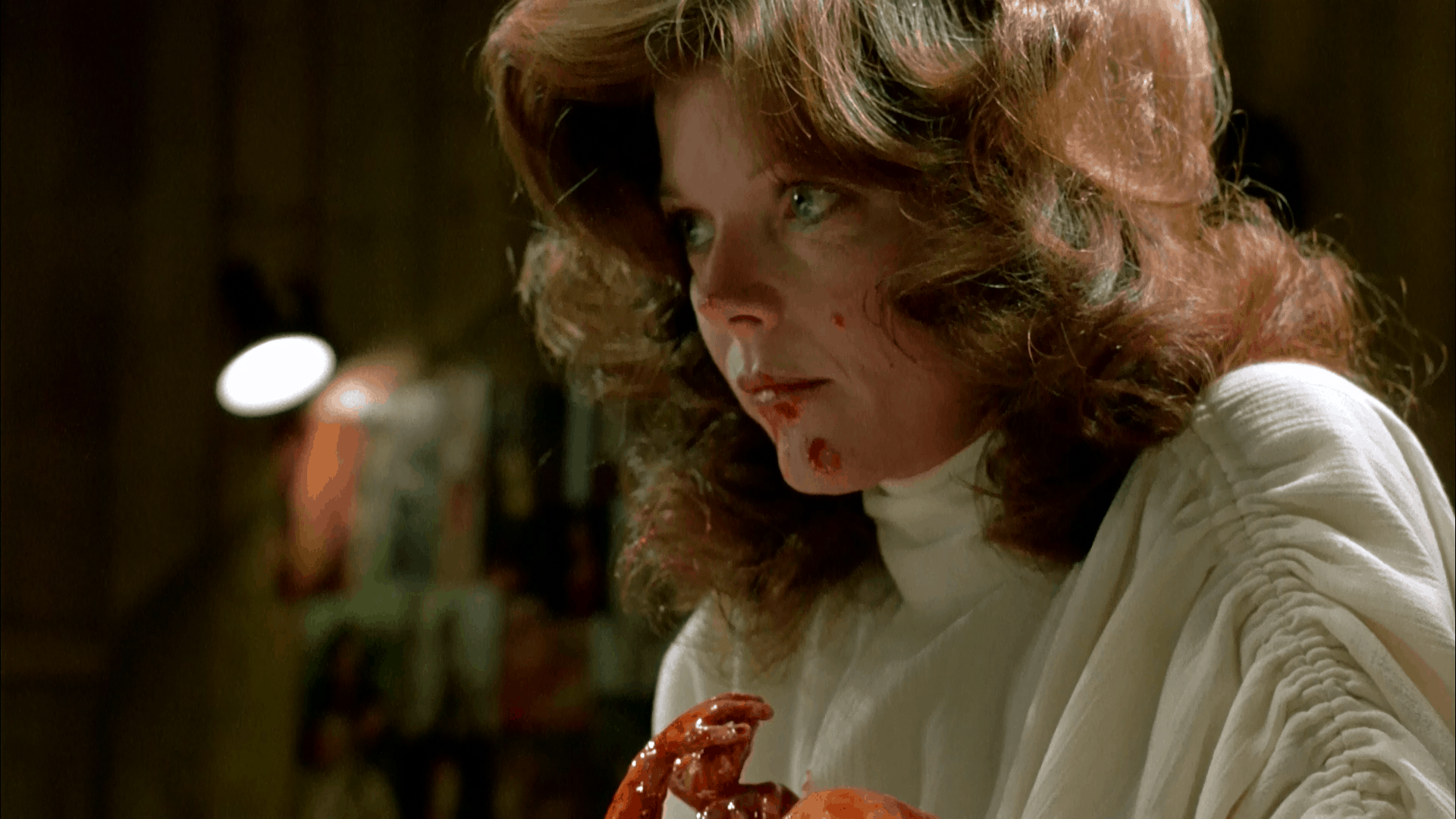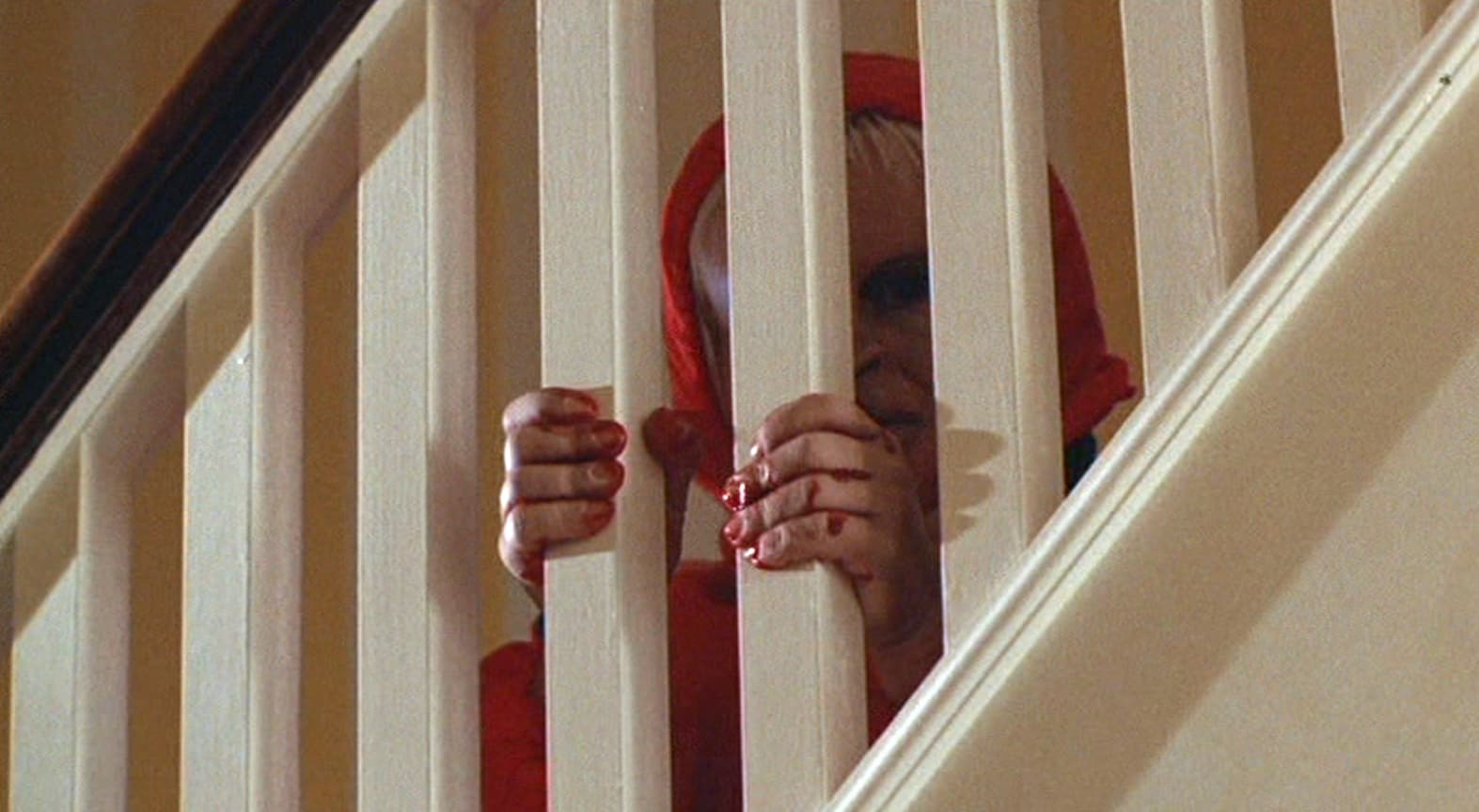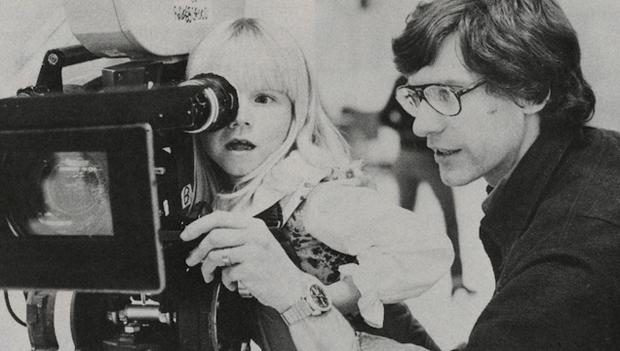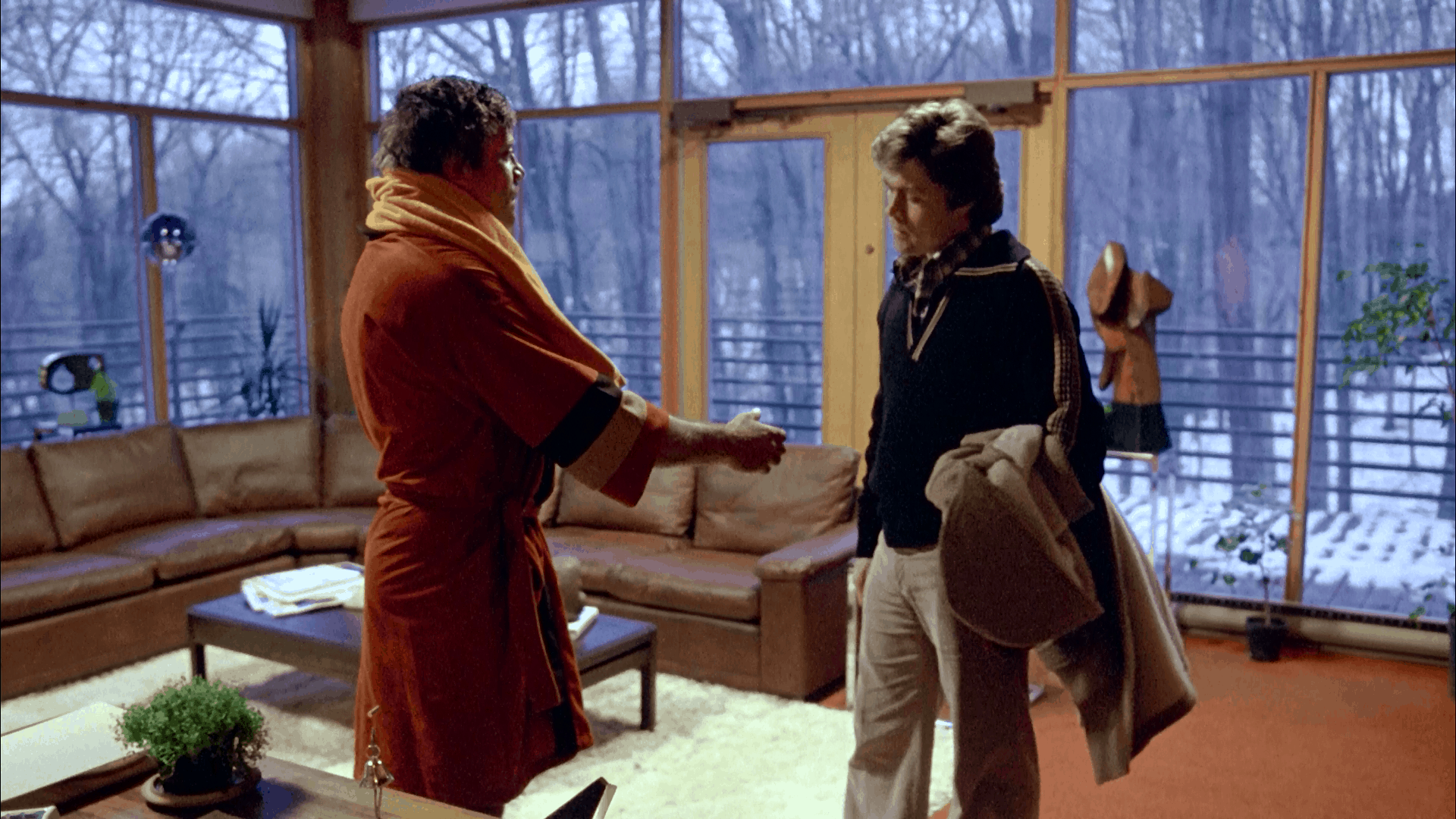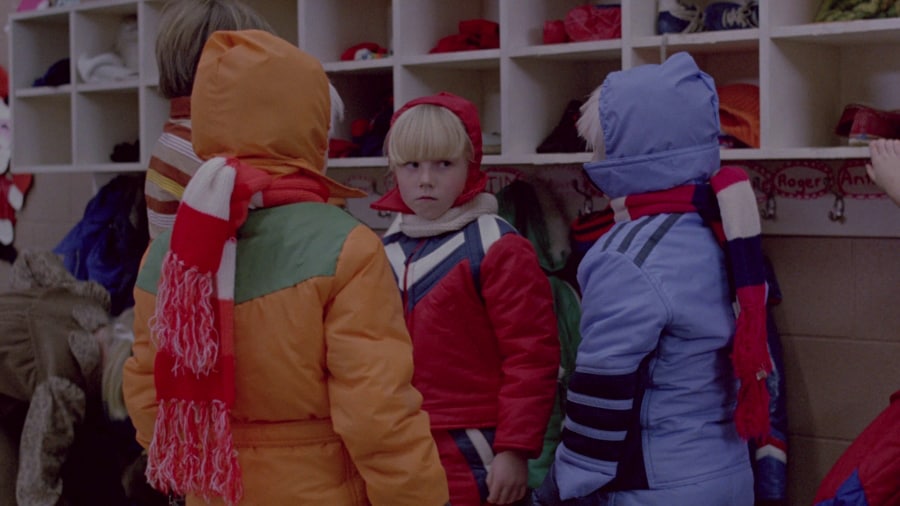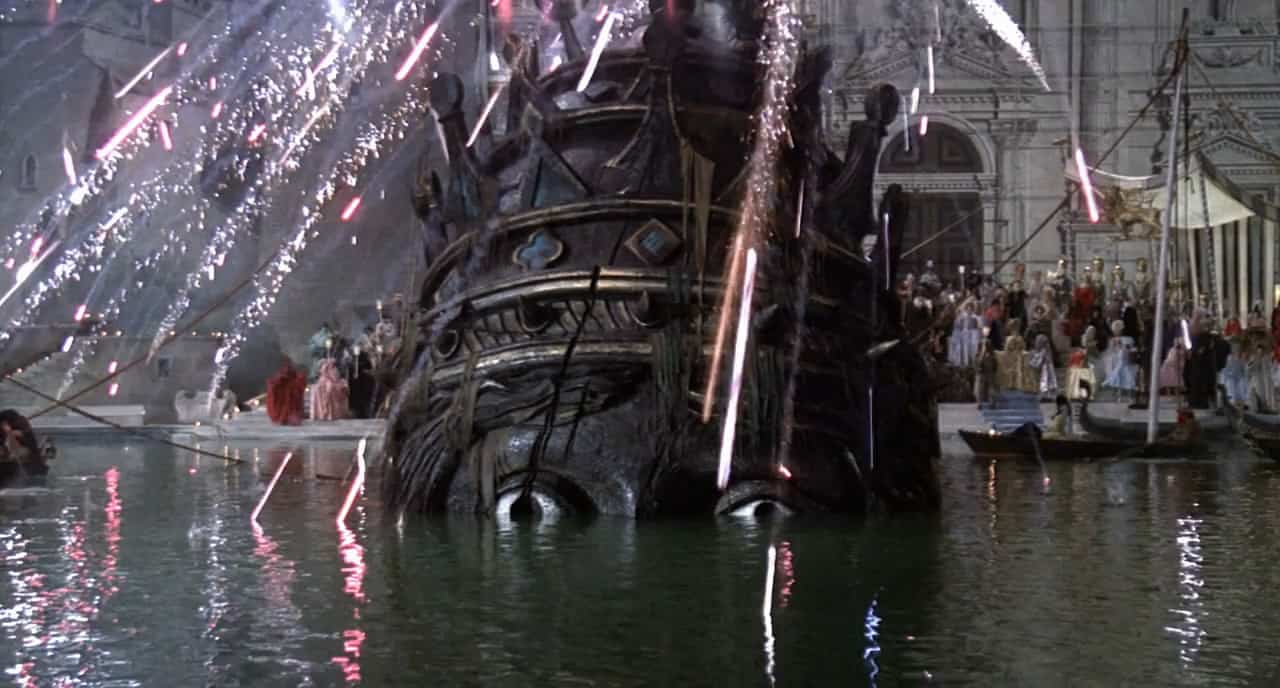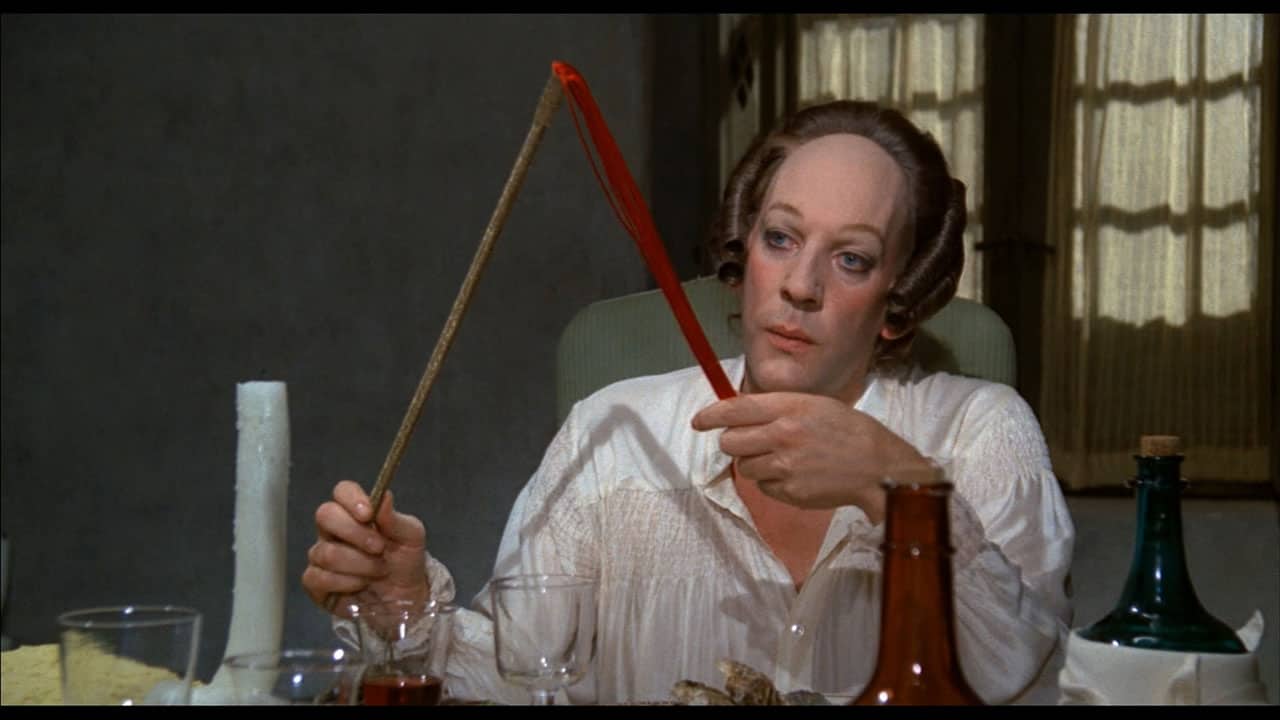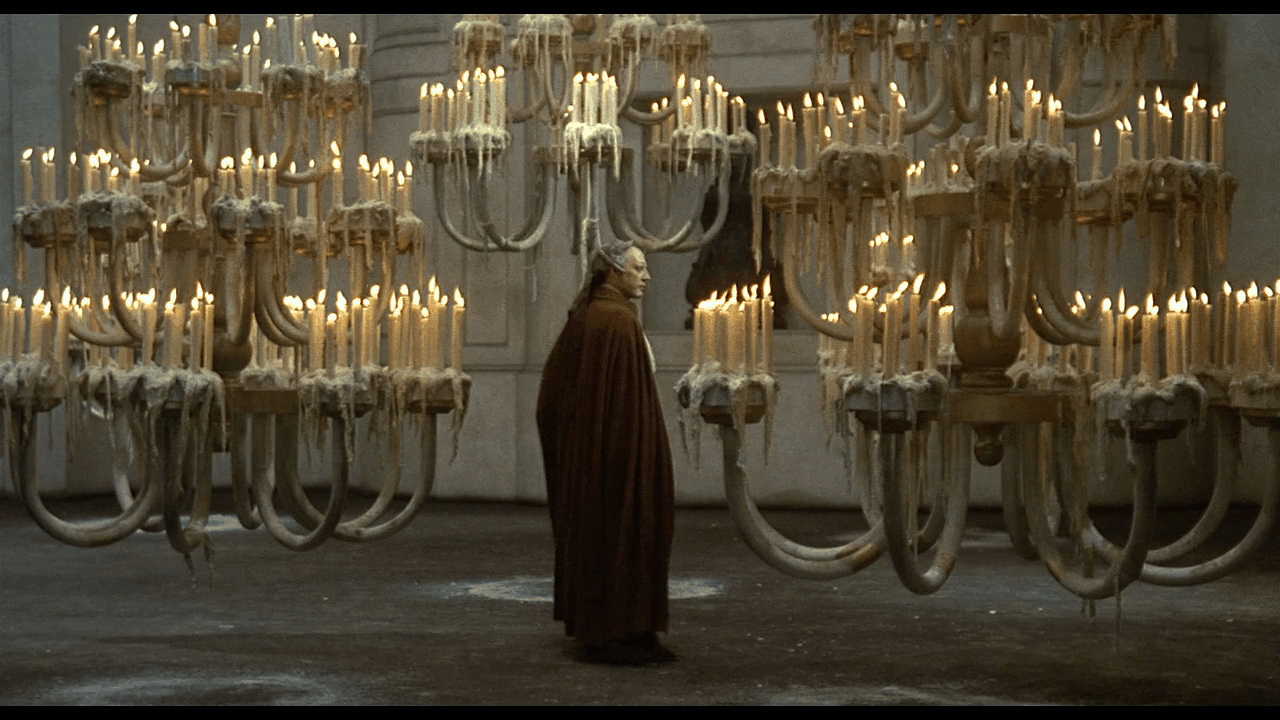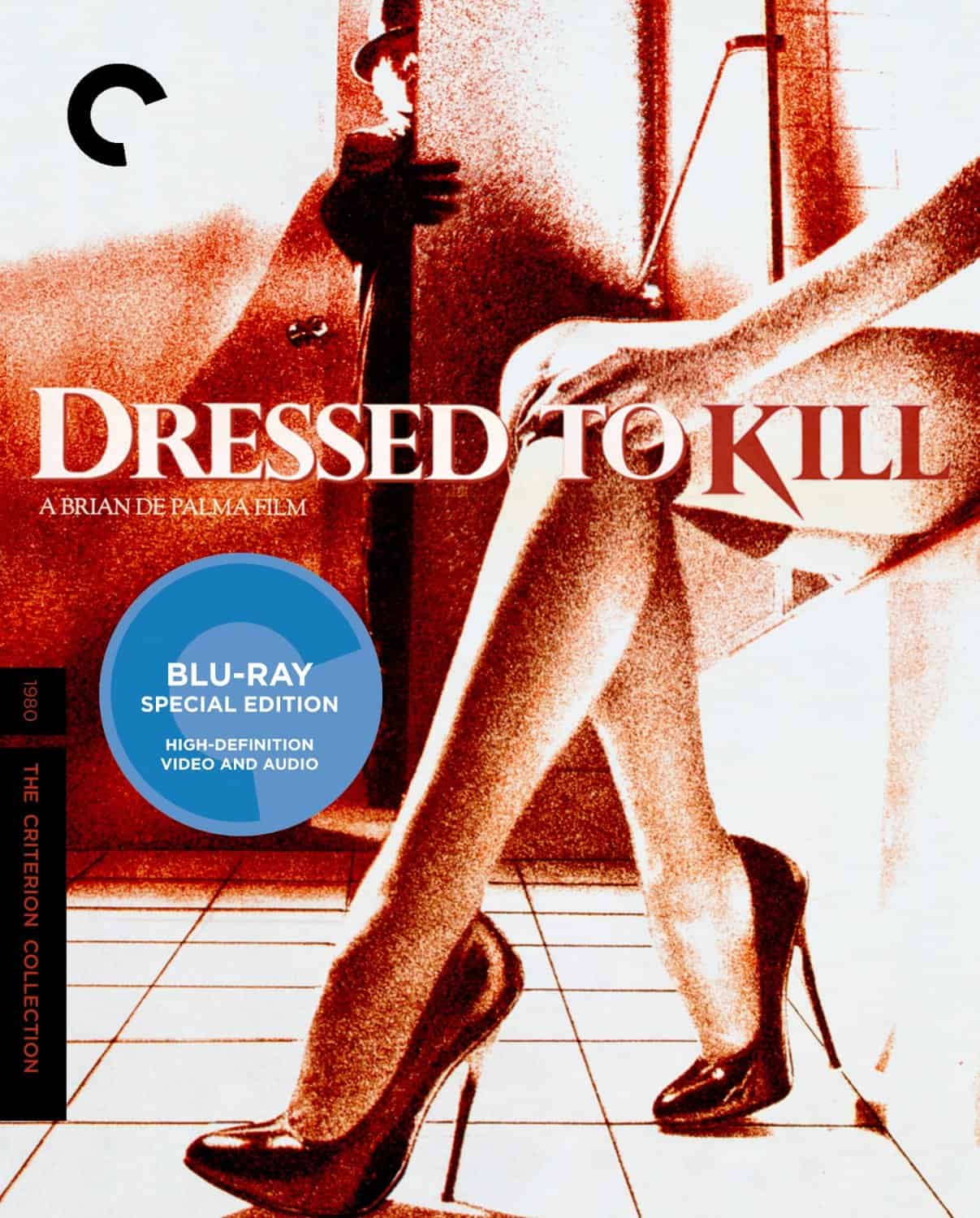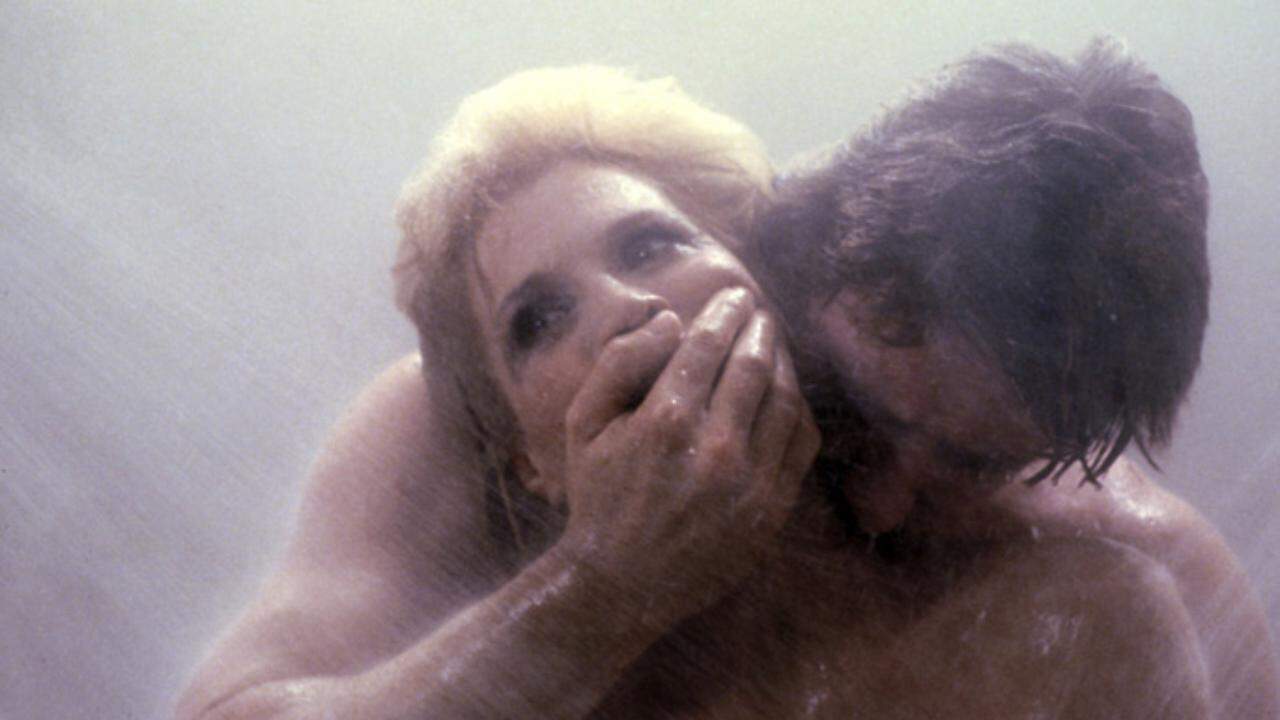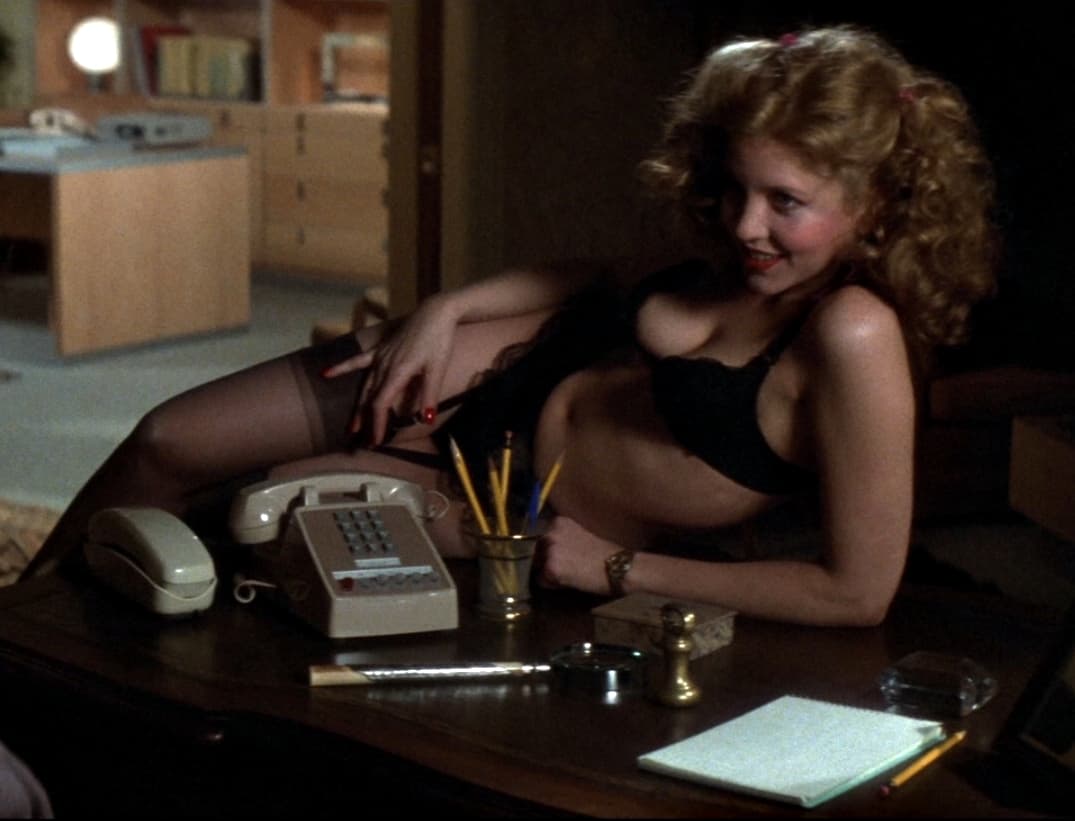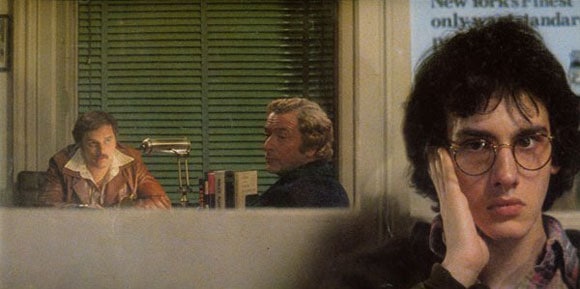It all started with
Exposed.
I’m not sure what brought this 1971 Swedish sexploitation film to the
suggestion portion of my Netflix account (presumably the roster of Jess
Franco films recently added), but after reading the description, I
figured it was worth a shot: “A pretty young teen finds her innocence
lost when an unguarded night of revelry yields shameful secrets, and a
stack of nude pictures that could ruin her life. But to get her hands on
the negatives, she’ll have to expose herself even further.” That is
indeed the basic plot of the film, which plays out exactly as one would
expect for such fare. But what was unexpected while watching
Exposed (also known as the much less enticing
Diary of a Rape), was the 21-year-old star of the film. Her name is Christina Lindberg.
Exposed, for lack of a better phrase, is what it is. It
delivers on everything its suggestive promotional material promises,
namely nudity. While not exactly enraptured by its narrative (though I
have certainly seen many a more flimsy premise), I nevertheless came
away absolutely infatuated. Not by the story, not by the genre, not by
the era or country in which the film was made. It was this Christina
Lindberg. Now of course, I must confess she is a knockout, a stunning
beauty who combines the most erotic of allure with the most innocent of
charms. Yet there is something more. Those who are familiar with
Lindberg only in passing may dismiss this, knowing her simply as the
often-nude sexpot—looking back on these films, she said she had a
“natural way to cope with no clothes”—but there is genuinely something
captivating in her performance. Her presence frequently gave even the
most sub-standard film a surprising degree of watchablity.
Lindberg was born Dec. 6 1950 in Gothenburg, Sweden. She began
modeling in the late 1960s, while still in high school, first in
publications relatively innocuous, then in the more scandalous likes of
Playboy, Penthouse, and others. This led to her first acting role in
Maid in Sweden (1971), also while she was still in school (though she was 18), followed by
Rötmånad (AKA
Dog Days and
What Are You Doing After the Orgy?, 1970),
which was actually released prior to her debut. About two dozen films
followed, 17 just in the 1970s, and six released in 1973 alone. While
some of the movies were barely better than atrocious, when Christina
Lindberg appears, all is forgiven.
As a whole,
Maid in Sweden
isn’t bad. It’s a standard coming of age tale (a premise that figured
into many similar sexploitation movies), and as such, it gives Lindberg a
chance to play up her expressive naiveté. Anyone familiar with Lindberg
and her film or modeling work would probably find it amusing that she
plays a chaste young girl unwise in the ways of sex, but that was, of
course, the point: all the better to make her sexual awakening that much
more, well, sexual. In one of several English-speaking roles, the
pig-tailed Lindberg plays bewildered timidity extremely well.
Ironically, though befitting the youthful lark’s titillating aspiration,
Maid in Sweden takes her innocence and packages it in the most
suggestive of apparel, as when on a date she wears a white dress that
is comically revealing given her supposed purity (the evening ends with a
sexual assault that strangely leads to mini-romance).
Maid in Sweden has several similar scenes that display the
dual nature of Lindberg’s recurring screen persona. One prolonged
sequence, for example, has her Inga character masturbating to the sounds
of her sister and her boyfriend having sex (played by real life husband
and wife Krister and Monica Ekman). The next scene then has the trio
merrily ice skating, with Lindberg looking like a wounded puppy when she
is tripped up. This back-to-back balance of blatant sexuality and
childlike disorientation is an exemplary Lindberg trait. Off screen, she
herself embodied this juxtaposition of being withdrawn and flamboyant.
“I was very shy,” she has stated. “I was very shy and it seems a little
bit odd when I take off my clothes and such, but I was very shy.”
Just after
Maid in Sweden, Lindberg worked with the (in)famous American director Joseph Sarno on two films. She hardly appears in
Swedish Wildcats (1972), but she is far more prominent in
Young Playthings (1972),
where she hardly appears clothed. In this rather odd film, her
character, Gunilla, is unknowingly being primed for a threesome
consisting of her, her boyfriend, and her best friend (the latter two of
whom have already been having an affair). Gunilla, however, becomes far
more intrigued by a woman who collects and repairs old toys. This
woman, as Gunilla soon finds out, also hosts elaborate costume parties
where attendees don make-up and various outfits then act out a variety
of erotic folk tales…or something to that effect. Either way, while it
takes some work to coerce Gunilla into the ménage à trois, her initial
reticence toward that, and the sexually charged routines, is quickly
lessened. Echoing the above point about thematic virtue in order to
stress the sexuality, at one point she bashfully states, “I’m much too
self-conscious.” This despite the fact she is frequently and unashamedly
nude throughout the film.
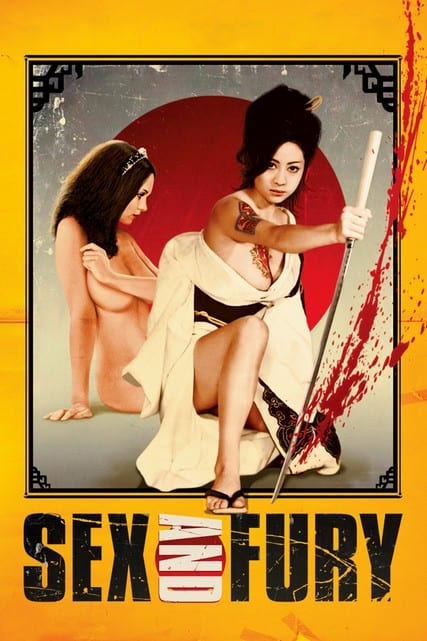
While not the star of the show, Lindberg has a supremely notable role in
Sex and Fury (1973),
where she plays opposite the first-billed Reiko Ike, quite the
sexploitation icon herself. Overall, this might be the best film to
feature Lindberg. Some may make a case for the cult classic
Thriller
(more on that later), but if one looks strictly for an interesting
story, decent action, stylistic dynamism, better than average production
values, and yes, sex, this hits more high notes than most. Even with
Lindberg in a secondary role, her appearance is intoxicating. The film
has one of her best entrances, as she descends a lavish staircase under
spotlight, her face partly concealed by a mask, which she then removes
to dramatic effect.
Sex and Fury is a wildly entertaining conglomeration of
glorious bloodletting, a decently engaging revenge plot, political
corruption and social upheaval, knife-wielding nuns, Lindberg dressed
like Pocahontas whipping Reiko (seriously), fighting, nakedness, and
nakedness while fighting. Lindberg’s character, an English woman fluent
in Japanese—played by a Swede—is likewise a multifaceted individual. She
is a sharp-shooting, ace gambler who has taken on the occupation of
British secret agent in order to see her Japanese boyfriend. And of
course, she often has to sleep with both men and women in order to
sustain her cover. Still, while hers is not the primary story of the
film, her romantic subplot is actually quite touching, a rarity in her
work.
Making the most of her Japanese stopover, Lindberg followed
Sex and Fury with
The Kyoto Connection (1973). Like
Dog Days, this is a Lindberg film I have so far only been able to view sans subtitles. Unlike
Dog Days,
the story here is pretty straightforward, negating any need for
explanatory dialogue anyway. Lindberg’s character arrives in Japan and
is abruptly kidnapped, raped, and held hostage. Through her sexual
wiles, which need no translation, she eventually manages to break fee.
That’s about it.
Though her films by no means count as “roughies,” certainly not in
the pornographic sense, Lindberg, for whatever reason, often found
herself on the brutal end of various physical encounters. Even in
Maid in Sweden,
her very first film, Lindberg’s character suffers the fate of
degradation, there at the hands of her sister’s boyfriend, who mocks her
backwardness but nevertheless pounces on her in the bathtub before the
film’s conclusion. Lindberg acknowledges this as something of a theme in
her work—the beautiful innocent girl abused in one way or another. Not
really looking Swedish, the small, dark-haired Lindberg had an
international appeal, so as for the recurrence of this harsh scenario,
she attributes the frequency to the intercontinental financing of her
films. Similar themes and characters were desired as producers from
around the world put up money on the basis of a specific type of
repeated character in a specific situation, however brutal it may be.
And speaking of brutal. In 1973 came
Thriller: A Cruel Picture,
probably Lindberg’s most famous film, the one film of hers most people
are at least somewhat aware of even if they don’t know who she is, and
one of the most controversial films ever made. It is also somewhat
complicated in terms of Lindberg’s filmography. On the one hand, the
film is, as its title states, quite the cruel picture. The inserted
shots of graphic sex surely stand out, as does some of the violence, the
most cringe-worthy example being the on-screen piercing and off-screen
removal of Lindberg’s character’s eye (the filmmakers actually used the
real eye of a corpse). It should be pointed out, however, that the
hard-core shots do not involve Lindberg. Contributing to her move away
from acting toward the end of the 1970s was her rather admirable refusal
to partake in straight pornography. Full frontal nudity was one thing,
explicit sex was another, so stand-ins were used for the close-ups (and
they are close up).
Thriller really stands alone in Lindberg’s body of work. If
one can get by the unnecessary explicitness of these pornographic
inserts, this is a classic 1970s revenge film, one of the best. Part of
the reason it is so memorable is that Lindberg’s Frigga is horribly
brutalized in just about every way imaginable, so by the time she does
enact her sweet retribution, a lot of people have a lot coming to them.
Frigga is first raped as a child, the trauma of which leaves her mute.
She is then drugged, given heroin to the point of dependency, held
hostage, forced into sex-slave labor, physically abused, and emotionally
tormented. When she is eventually able to leave for a few hours, she
secretly trains in hand-to-hand combat, firearms, and race car driving
(Lindberg really did learn karate for the role, and as she did not have a
driver’s license, she had to learn how to do that, too). Finally, the
time comes. Frigga assembles a stockpile of weaponry, dresses in black
from head to toe (including eye-patch), and embarks on a rigorous,
blood-spattered rampage. The low angle shot of this angelic beauty
turned kill-crazy vehicle for vengeance—adorned in a flowing black
trench coat, guns in hand, leaves falling around her—is one of the
greatest single images in all of Lindberg’s work. Hell, in all of
cinema.
Thriller was actually the first Christina Lindberg film I
had ever seen, about 10 years ago. I had no idea at the time who she was
and only watched the film because of its reputation and because
Lindberg’s patched eye was an inspiration for Daryl Hannah’s character
in
Kill Bill. Seeing it now as a showcase for one of Lindberg’s
most complex performances, and one of her most enjoyable, all those
other elements fade away. Its Tarantino-approved popularity is partly
why it is also hands-down the Lindberg film in the best condition. No
other DVD of her movies looks or sounds this good.
In films like
Schoolgirl Report Vol. 4 and
Secrets of Sweet Sixteen (1973),
Lindberg had relatively smaller roles in multi-part compendium
features, which told a variety of sexy stories usually dealing with
promiscuous young nubiles. Full disclaimer, I have not watched any of
the segments of any of these films if they did not contain Lindberg, and
therefore can’t judge any of these titles as a whole. In terms of what I
look for and enjoy in a Chistina Lindberg movie, however,
Secrets of Sweet Sixteen is just so-so (Lindberg is there, looking great, but the film and her specific character aren’t terribly interesting), but
Schoolgirl Report
certainly has its moments. There she looks even better, and while the
story of her character’s incestuous relationship with her brother may be
a bit off-putting, it’s a reasonably entertaining segment. Besides, if
nothing else, as the DVD proclaims, it also has “psychedelic dreams with
bloody naked nuns and a firing squad.” So, there’s that.
Lindberg’s last great featured role was in
Anita: Swedish Nymphet (1973). Not quite to the violent degree of
Thriller,
Anita
still has one of her darker characterizations. Interesting about this
film is that it is one where her sexuality figures into the essential
plot of the film; rather than just being a film that features a lot of
sex, this film is actually about sex. Lindberg plays, as the title
suggests, a 17-year-old nymphomaniac. Her insatiable sexual quest leads
her down a dark road of despair where she is ostracized and tormented by
a lack of self-worth. Somewhat in opposition to those films where
Lindberg is the submissive, mistreated girl, here she has an aggressive
sexuality that leaves her on the comparatively forceful end of her
amorous meetings. Yet through it all, she remains pathetic and
psychologically weak, chiefly because she is burdened by an inner
turmoil that does not, in most cases, make the sex pleasurable. It is
more a stolid routine that corresponds to the nature of addiction.
Certainly, Anita’s sexual promiscuity is exploited in the film, but
only to a degree (like when she performs a striptease in front of her
parents and their dignified houseguests, many of whom encourage the
routine—“It’s not as bad as it looks,” her father assures her stunned
mother). As often as not, the affliction is actually treated with a
reasonable seriousness, especially as Anita’s sole friend, Erik (a young
Stellan Skarsgård), tries to explain and “cure” her illness,
approaching her with sympathy and understanding. As far as Lindberg’s
performance is concerned, her expressed nymphomania, as dismissive as
one might be to the malady, gives her some psychological complexity to
work with, further proving there is genuine talent behind the doe-eyed
beauty. She quite capably conveys Anita’s desperation with a pitiable
quality reflected by the film itself, which is gloomy and generally
joyless. Anita, like the movie, has the look of a cold morning after.
What this does, and one sees this is several Lindberg films, especially
those where she is treated poorly, is it creates a sense of viewer
engagement beyond the frivolity of the film’s nature. One sees this poor
girl, this small, cute, seemingly helpless individual, and one can’t
help but want to comfort her.
Of everything that came after this for Lindberg, I have only seen
Around the World with Fanny Hill and
Sängkamrater (Wide Open),
both released in 1974. There isn’t a whole lot to say about these two
films, as Lindberg does not have much of a presence in the former and
only first appears 20 minutes into the latter, popping up infrequently
and marginally thereafter (though her first big scene is definitely
striking, by which I mean she gets very naked). In any case, for the
last two major films of Lindberg’s career, both are unfortunately rather
unremarkable.
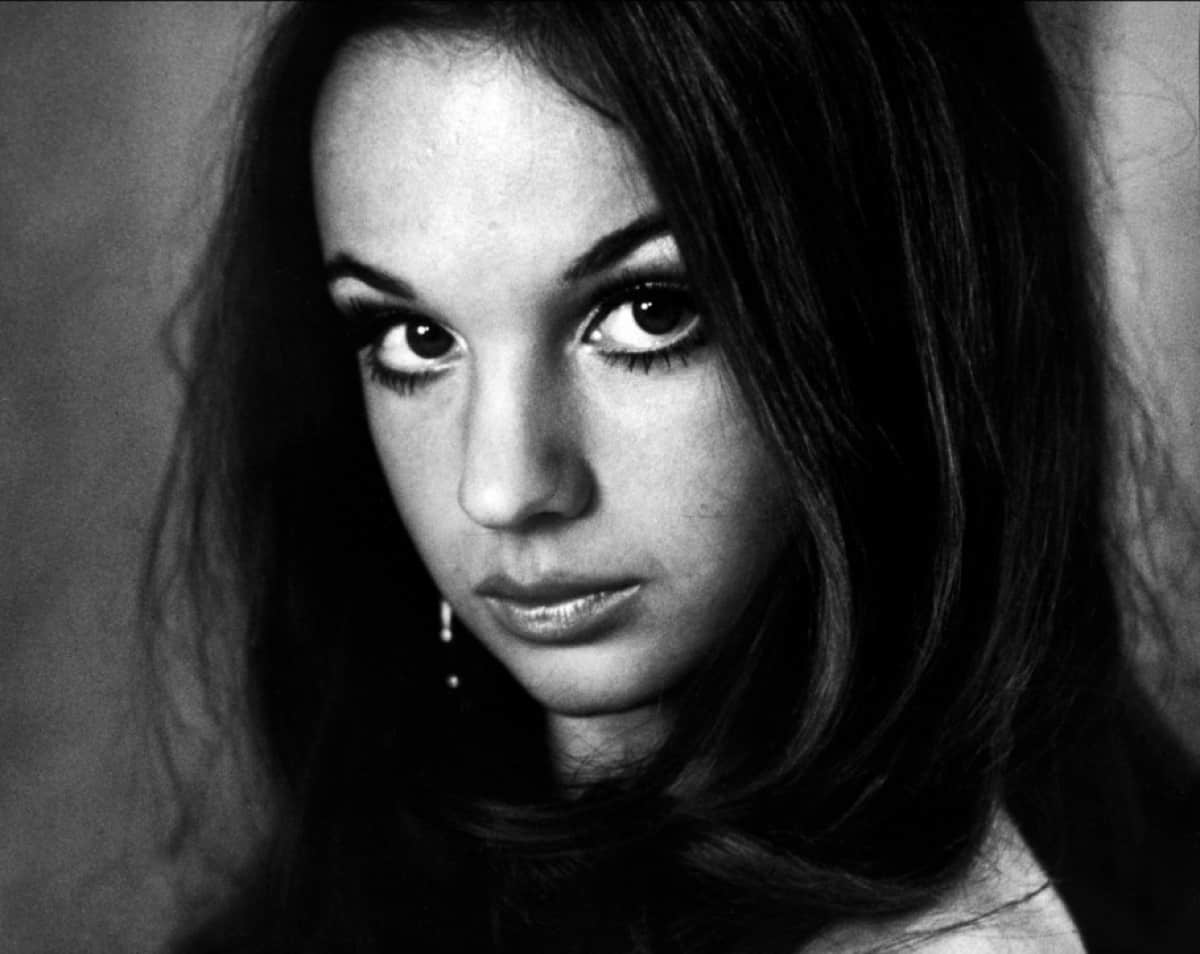
Christina
Lindberg was the perfect actress at the right time for a certain kind
of movie. While this helped give her a briefly noteworthy career in the
1970s and she is something of a cult figure today, I can’t help but feel
her status in her respective field was and remains a hindrance. In most
sexploitation fare, the actors are there to do what they do and to do
little else, which is fine. Those movies and those performers have their
place in cinema history and this isn’t to belittle the work. But many
of these actors are seldom able to rise above the common filmic
territory (save for someone like Skarsgård). When watching Lindberg,
there appears to be a sincerity running counter to the triviality of the
films, and a talent, or at least the potential for talent, that has
been left underexplored and underrated because of the type of movies in
which she appeared. Her films are not “great” by any means, and I
definitely would not suggest her acting range was in any way
overwhelming. But if qualifications for being a memorable and enjoyable
star include leaving a strong impression no matter the size of the role
and making even a lesser movie better, she more than fits the bill.
Still, her acting isn’t terrible, especially for what she has to do
and what she had to work with. One of the defining traits of Lindberg’s
work is the impression that even she knows she is better than what she’s
dealing with. While most everyone else in these films seem to be
phoning in their performances, not trying too hard, perhaps knowing what
type of movie they’re making after all, Lindberg acts with an
earnestness that transcends her role and the material. This even seems
to be the case with her bigger-name co-stars, like Ulla Sjöblom, who in
1958 starred in Ingmar Bergman’s
The Magician, and Heinz Hopf, who had quite the television career before starring as villainous characters in
Exposed and
Thriller (and later also working with Bergman on
Fanny and Alexander). “When I worked I was very serious,” Lindberg said. “I tried to do my best.”
For all intents and purposes, Lindberg’s short-lived acting career
was nearing its end before she was 30 years old (an even shorter singing
career yielded just two songs). She started studying journalism soon
thereafter, wrote a number of articles for several publications, and
began working for her soon-to-be fiancé Bo Sehlberg at his aviation
magazine Flygrevyn, which she took over as owner and editor-in-chief
following his death in 2004. As her IMDb biography sums up, she is today
“a keen mushroom picker… an animal rights activist, an
environmentalist, and a vegetarian.”
During a few glorious years in the 1970s, though, Christina Lindberg was really something else.

